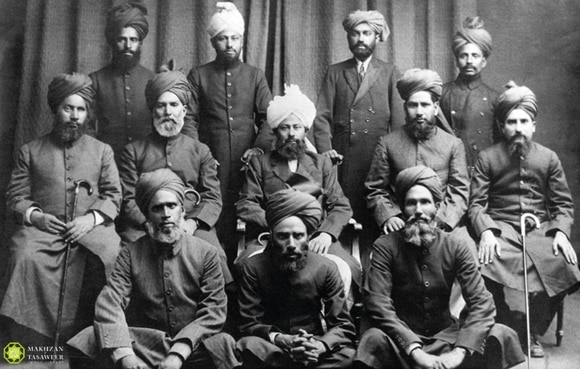
Hazrat Mirza Bashiruddin Mahmud Ahmad, Khalifatul Masih IIra witnessed the London summer of 1924 turn into autumn. He had intended to only attend the Conference on the Living Religions of the Empire, where he had been invited to read a paper on the Ahmadiyya Movement in Islam.
During the course of his stay in London, a series of events began to unfold – one leading to the other – and turned this tour into an extremely eventful one. Having found out that he was in London, newspapers, societies, study circles, religious communities and various political platforms approached him and requested him to enlighten them with his knowledge. This alone was a demanding task – constantly writing papers to be delivered to a variety of audiences – but more was yet to come his way.
He was in his rented accommodation at Chesham Place when the afternoon post slipped through the mail slot of the front door. Away from home, this post were understandably much awaited. But today, it had brought a very sad news: Maulvi Nematullah Sahib had been stoned to death in Kabul at the order of the Amir of Kabul. Why? For proclaiming his faith in the Ahmadiyya Muslim community. As Hazrat Khalifatul Masih IIra proceeded to his room to supplicate, he ordered Hazrat Maulana Abdur Rahim Dardra, Hazrat Fateh Muhammad Sayalra and Hazrat Maulana Abdur Rahim Nayyarra to bring this tragic incident to the knowledge of the British press.
After his supplications in solitude, Huzoorra came out of his room and led the congregation in Asr Salat. Afterwards, with a very heavy heart, Huzoorra sat among his companions and spoke with great grief about the innocent martyr. He was restless for the whole world to find out how, in a civilised world, the Amir of Kabul could commit such inhumane brutality and that too in the name of faith.
He considered publicising this atrocity, for the sake of raising awareness, through billboards, placards and posters on streetlights. Having considered all these options, he still saw it as an insufficient reaction as compared to the level of the act itself; he wanted every person in Britain to know how inhumane it was to not only prohibit someone to profess their faith, not to speak of slaying innocent human beings.
Hazrat Khalifatul Masih IIra did not want to restrict his message of freedom of faith to London or the UK only, rather he wanted it to be circulated to countries across the world, especially to the countries that were influential in the League of Nations. One specific instruction he gave in this regard was:
“Spend whatever amount of money it takes to publicise our protest!”

The statement is quite strong on its own, but coming from the head of a community that did not have much in its reserves and only thrived on meagre contributions of its members makes it even more powerful.
More than it being powerful, it goes to show the passion that Hazrat Khalifatul Masih IIra had for freedom of professing one’s religion, a passion ignited by the Holy Founder of the Ahmadiyya Muslim Community and upheld by all his successors to this day.
A press release was prepared to which Huzoorra made changes to the text and finalised it so that be sent out to the British and the overseas press.
Dard Sahibra and Sayal Sahibra returned from Fleet Street and reported to Huzoorra how editors had shown great interest in the news story; some spoke for an hour to extract all details.
After much consideration, Hazrat Khalifatul Masih IIra decided that the best way to raise awareness about freedom of faith, in the wake of this atrocity, would be to hold a protest meeting where dignitaries and the press were invited. While preparations for this peaceful, yet powerful protest were underway, the press had picked up the news and published it.

The 3 September 1924 issues of The Times, The Daily Chronicle, The Daily Express, The Daily News and almost all major and minor newspapers of the country had it covered. Several visits of Hazrat Chaudhry Zafarulla Khanra to the India Office (then in-charge of Indian affairs) brought back no good results.

The government seemed reluctant in approaching the Amir of Kabul. Hazrat Khalifatul Masih IIra understood and explained why it was so: the British government did not want to sour it relations with the Afghans at a time when Russia was waiting to use the Afghanistan for its political purposes.

Huzoorra, however, insisted that if the press keeps the story alive for a few days, the government would feel obliged not to sit idly. While many halls could not be booked at short notice, the organisers of Essex Hall agreed and booked it for 17 September 1924.

Being situated at the Strand, Essex Hall was, undoubtedly, in the heart of London – the global capital. All those accompanying Hazrat Khalifatul Masih IIra were allocated certain duties with regard to the protest meeting and a committee formed by the name of “Protest Committee”. Maulvi Muhammad Din Sahib being its president and Fateh Muhammad Sayal Sahibra its secretary, all others were given duties of cashiering, publicity and event management etc.
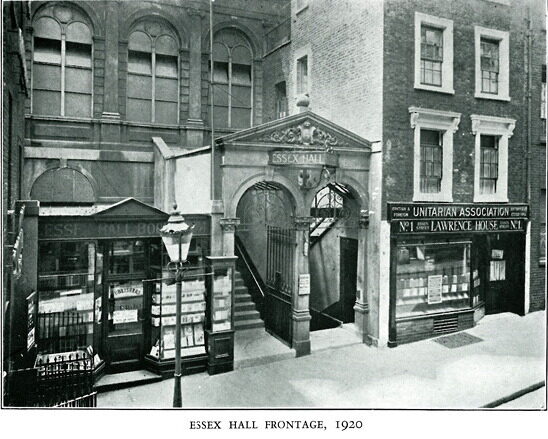
With all set to go, the protest meeting started at 8pm. A huge number of dignitaries and members of the press were in attendance.
Dr Walter Walsh was invited to the stage to chair the meeting. In his opening remarks, Dr Walsh condemned the inhumane act of stoning a human being merely on the grounds of their belonging to a certain faith. He said that everyone who becomes aware of this brutality should express their hatred openly.
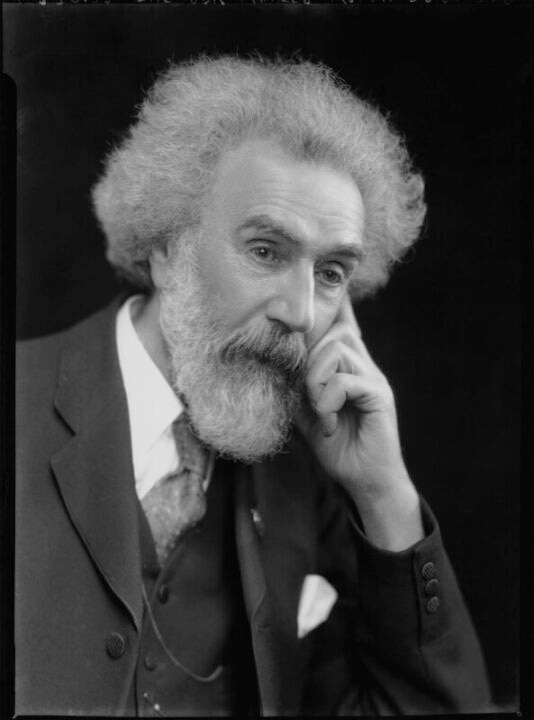
Dr Walsh, at the end of his address, introduced Hazrat Khalifatul Masih IIra and invited him to the podium to express his thoughts on the whole issue. Hazrat Khalifatul Masih IIra elaborated the details of the stoning of Maulvi Nematullah Shaheed and described the series of unfortunate events that led to his sad end.
Dr Walsh appreciated Huzoor’sra passionate advocacy for freedom of faith. He particularly acknowledged how Huzoor’s ideology was based on purity of intention and not on emotional attachment to the painful incident.
Dr Walsh urged that the British government should intervene and see how they could curb such inhumane tendencies. A resolution was passed and signed by most of the dignitaries in attendance. It was unanimously agreed that a resolution be prepared and sent to not only the British government, but to the League of Nations also.
Dr Walsh signed the resolution, followed by other dignitaries. It is interesting to note that among the dignitaries attending were the likes of Sir Arthur Conan Doyle and Sir Francis Younghusband.
With special thanks to the United Nations Archives in Geneva (who hold the records of the League of Nations), a selection of the correspondence is included below. These images cannot be reproduced, copied or transmitted without the written permission of the League of Nations Records, UNO Archives.
While the Ahmadiyya Muslim Jamaat had always upheld the freedom of faith – something it continues to this day – this event proved to be one of the first, if not the first, campaign in this regard and at this scale by any Muslim leader.
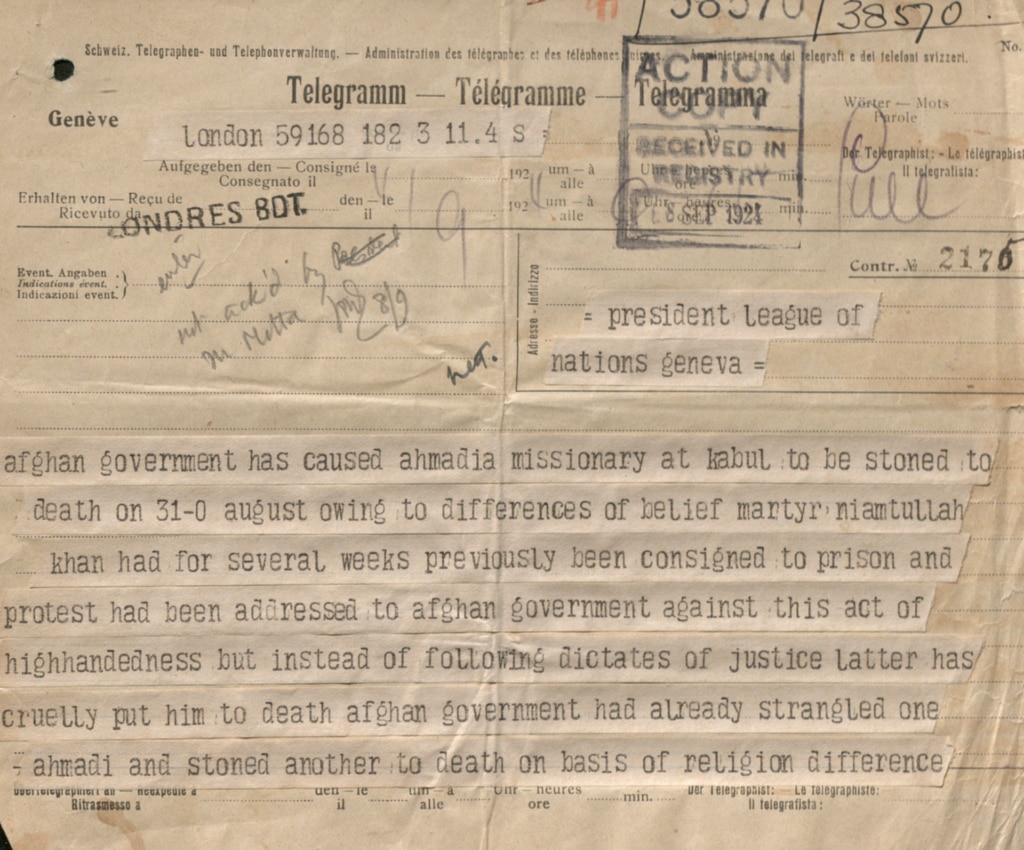
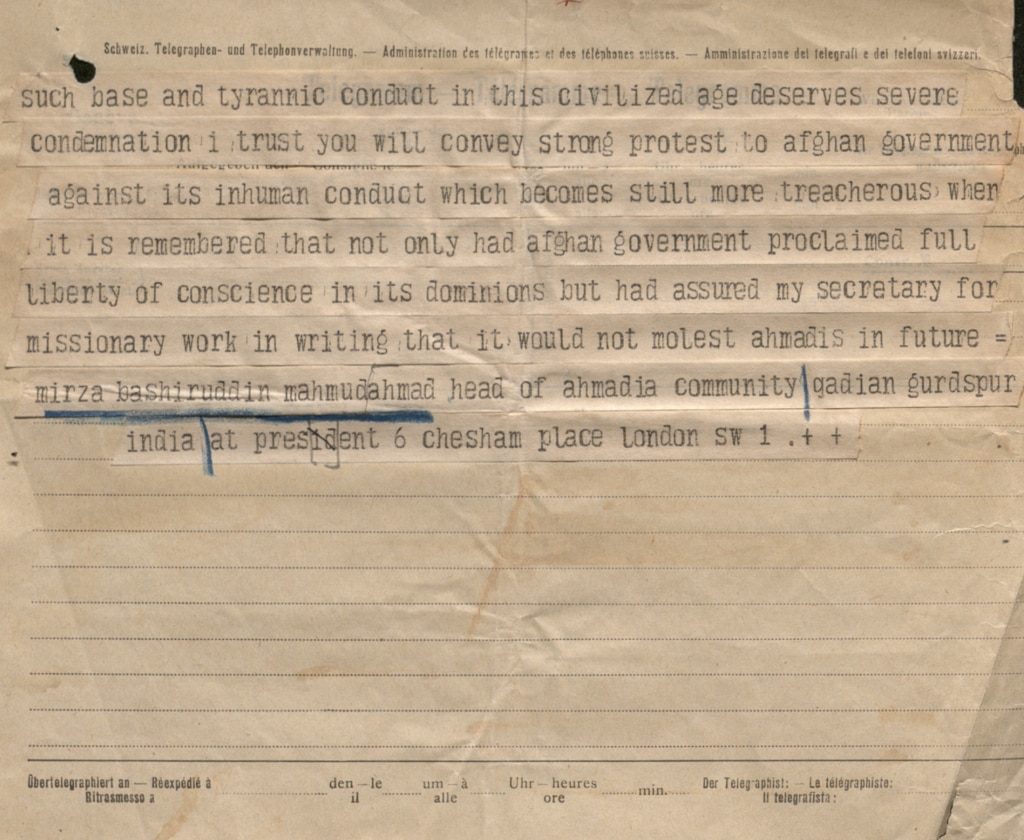
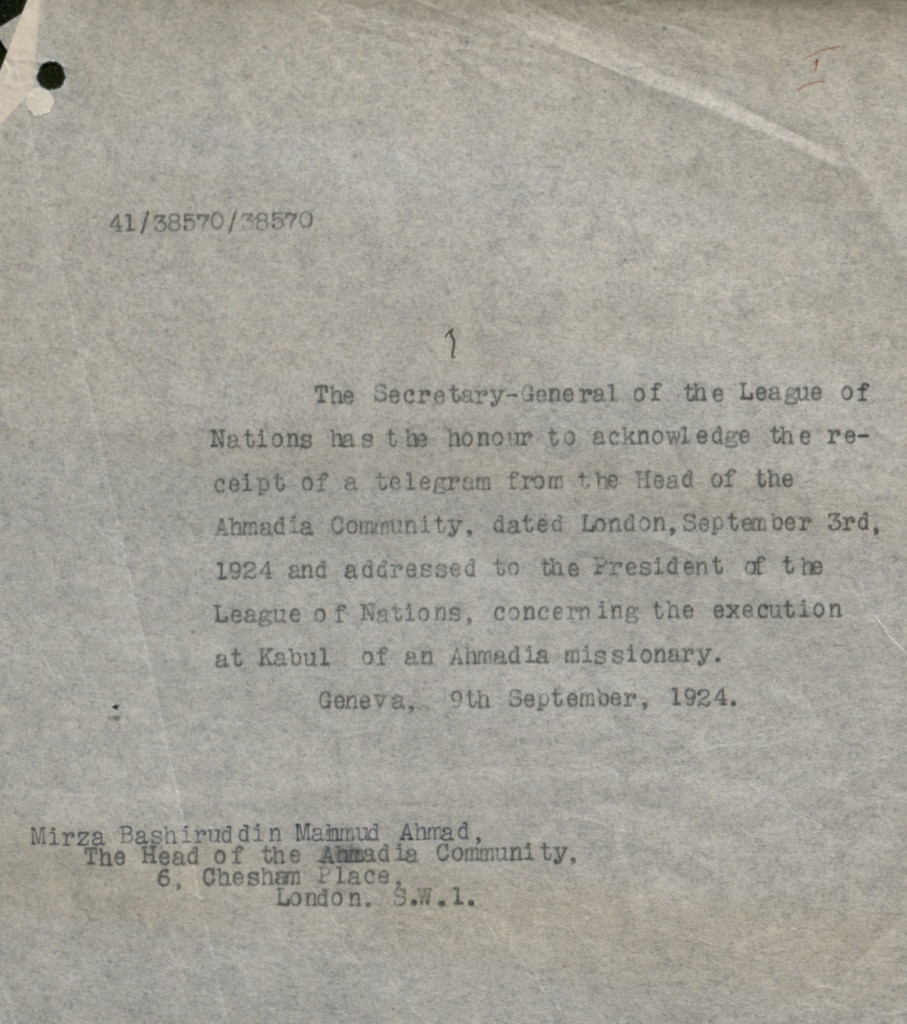
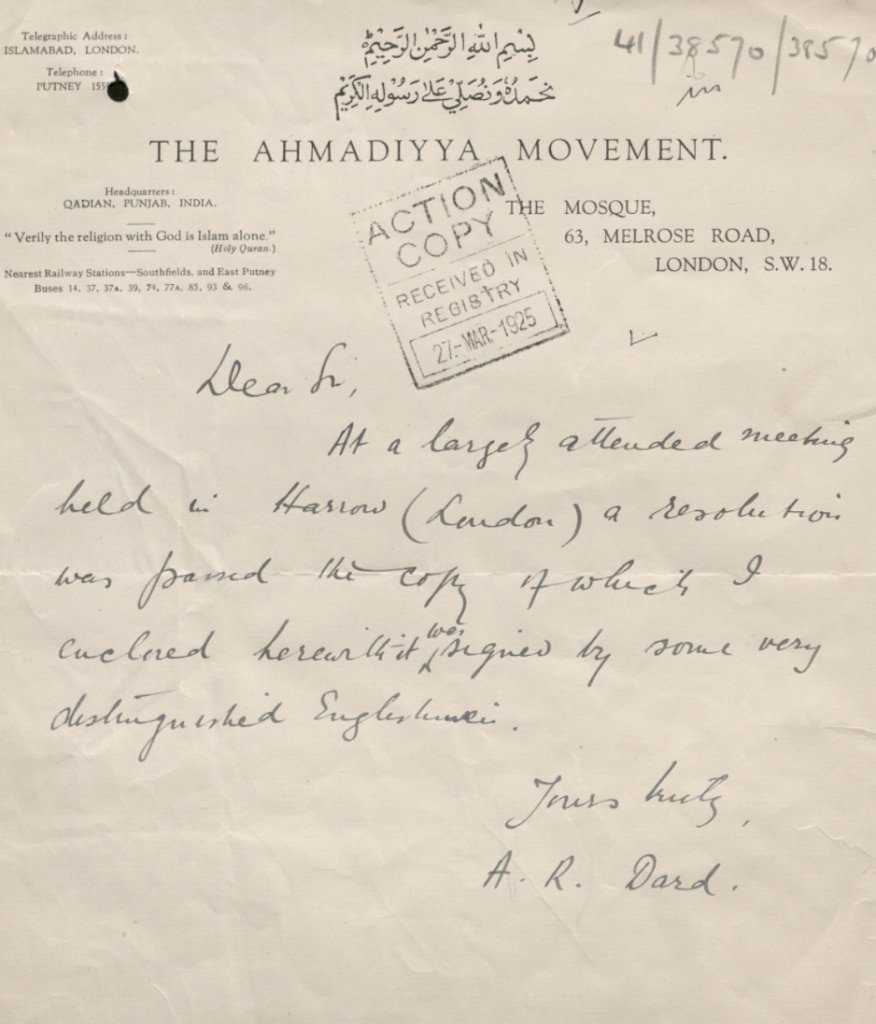
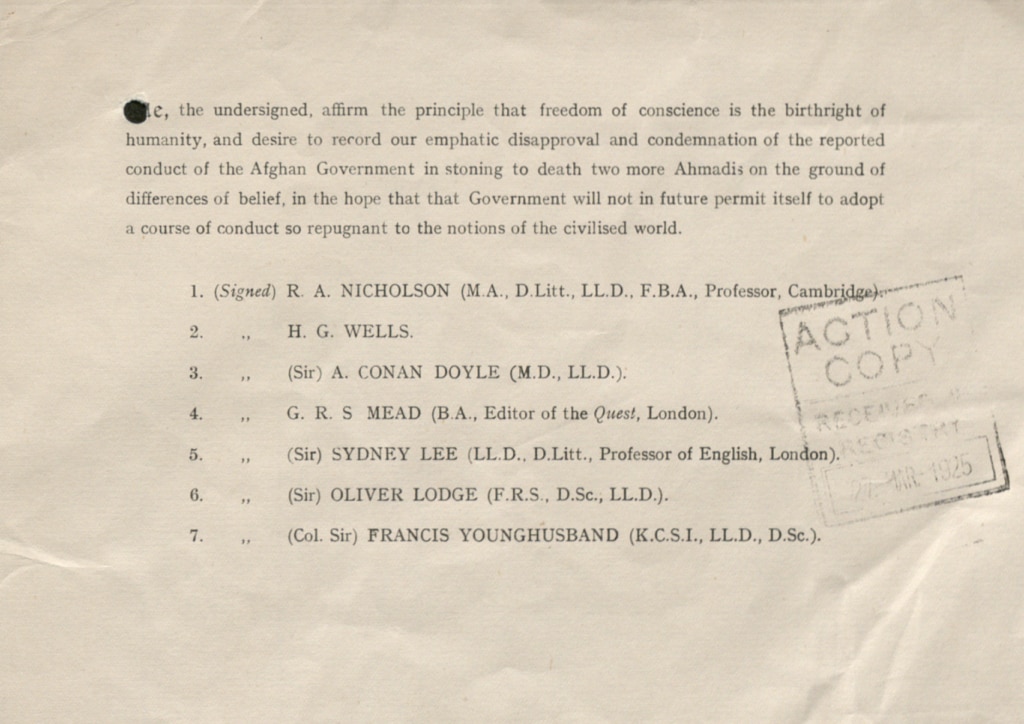
(Written by Asif M Basit)

